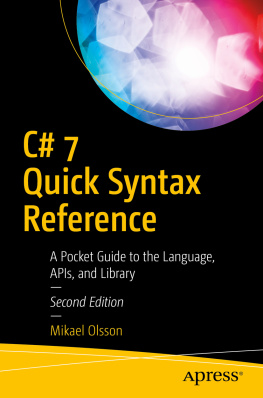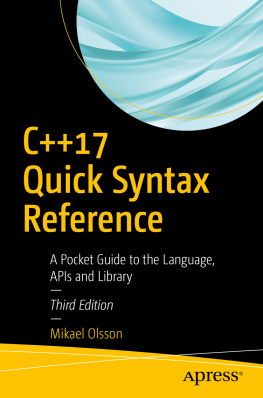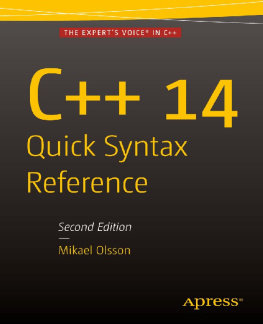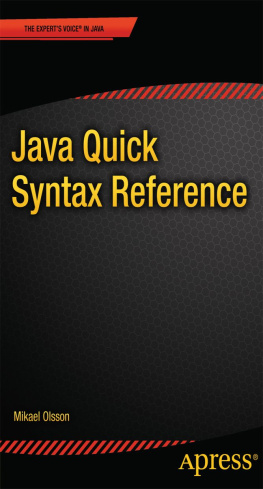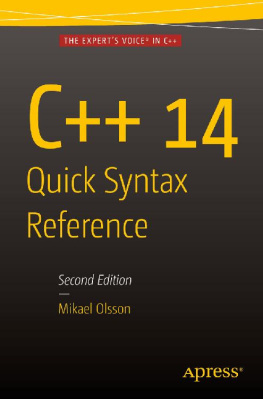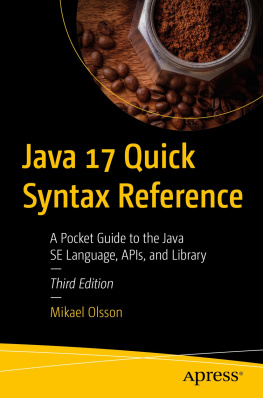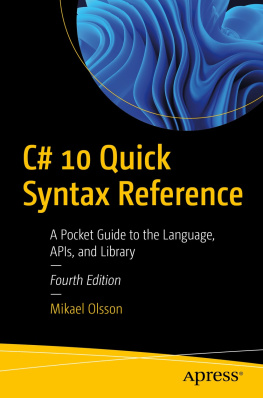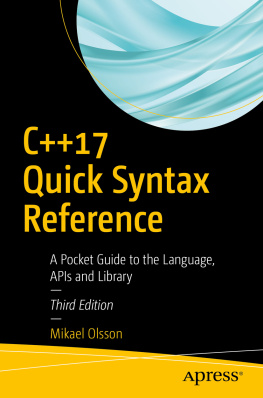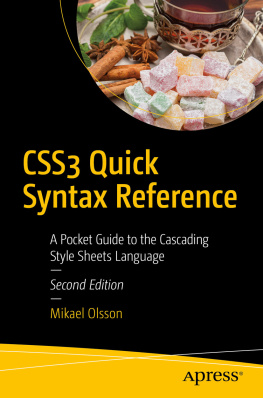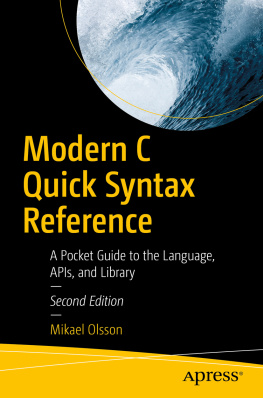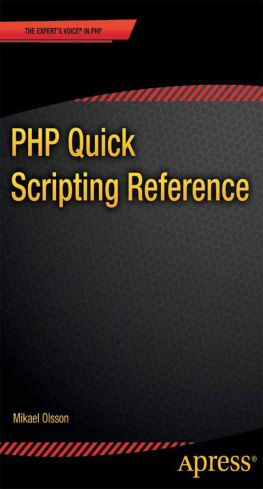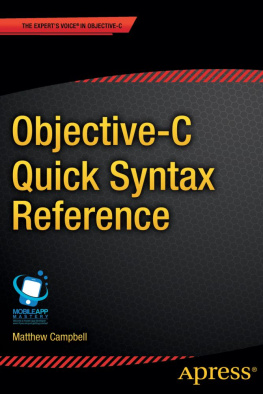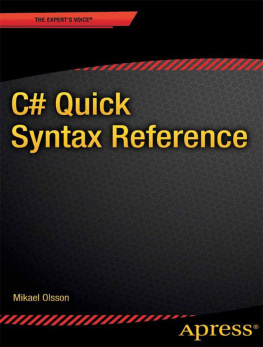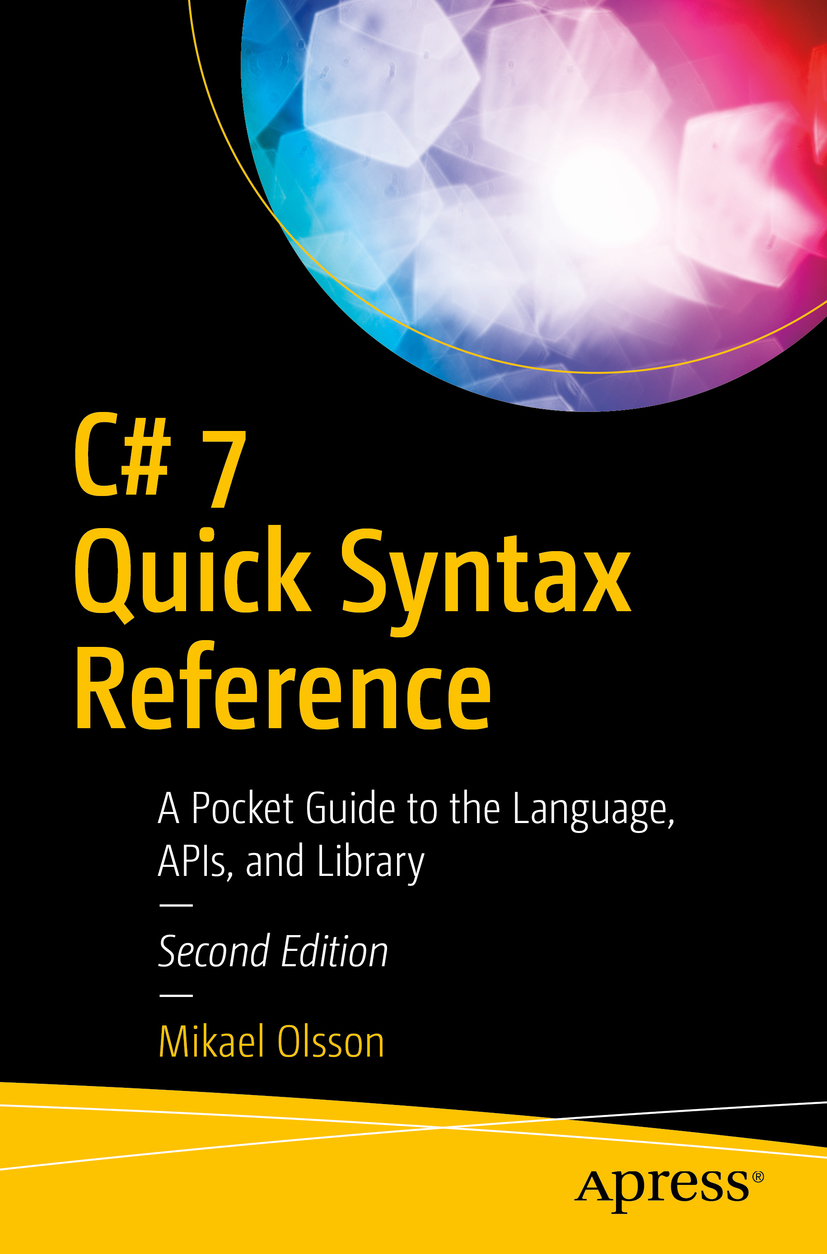Mikael Olsson - C# 7 Quick Syntax Reference: A Pocket Guide to the Language, APIs, and Library
Here you can read online Mikael Olsson - C# 7 Quick Syntax Reference: A Pocket Guide to the Language, APIs, and Library full text of the book (entire story) in english for free. Download pdf and epub, get meaning, cover and reviews about this ebook. year: 2018, publisher: Apress, genre: Computer. Description of the work, (preface) as well as reviews are available. Best literature library LitArk.com created for fans of good reading and offers a wide selection of genres:
Romance novel
Science fiction
Adventure
Detective
Science
History
Home and family
Prose
Art
Politics
Computer
Non-fiction
Religion
Business
Children
Humor
Choose a favorite category and find really read worthwhile books. Enjoy immersion in the world of imagination, feel the emotions of the characters or learn something new for yourself, make an fascinating discovery.
- Book:C# 7 Quick Syntax Reference: A Pocket Guide to the Language, APIs, and Library
- Author:
- Publisher:Apress
- Genre:
- Year:2018
- Rating:3 / 5
- Favourites:Add to favourites
- Your mark:
C# 7 Quick Syntax Reference: A Pocket Guide to the Language, APIs, and Library: summary, description and annotation
We offer to read an annotation, description, summary or preface (depends on what the author of the book "C# 7 Quick Syntax Reference: A Pocket Guide to the Language, APIs, and Library" wrote himself). If you haven't found the necessary information about the book — write in the comments, we will try to find it.
This quick C# 7 guide is a condensed code and syntax reference to the C# programming language, updated with the latest features of C# 7 for .NET and Windows 10. It presents the essential C# 7 syntax in a well-organized format that can be used as a handy reference.
In the C# 7 Quick Syntax Reference, you will find a concise reference to the C# language syntax: short, simple, and focused code examples; a well laid out table of contents; and a comprehensive index allowing easy review. You wont find any technical jargon, bloated samples, drawn-out history lessons, or witty stories. What you will find is a language reference that is concise, to the point, and highly accessible. The book is packed with useful information and is a must-have for any C# programmer.
What You Will Learn
Discover whats new in C# 7 and .NET for Windows 10 programming, including out values, tuples, discards, ref locals and returns functions, local functions, throw exceptions, and numeric literals
Create lightweight, unnamed types that contain multiple public fields
Use Discards: temporary, write-only variables used in assignments when you dont care about the value assigned
Create branching logic based on arbitrary types and values of the members of those types
Nest functions inside other functions to limit their scope and visibility
Throw exceptions in code constructs that previously were not allowed
Declare methods with the async modifier to return other types in addition to Task
- Use the new numeric literals found in C# 7 to improve readability for numeric constants
Who This Book Is For
Those with some experience in programming, looking for a quick, handy reference. Some C# or .NET recommended but not necessary.
Mikael Olsson: author's other books
Who wrote C# 7 Quick Syntax Reference: A Pocket Guide to the Language, APIs, and Library? Find out the surname, the name of the author of the book and a list of all author's works by series.

